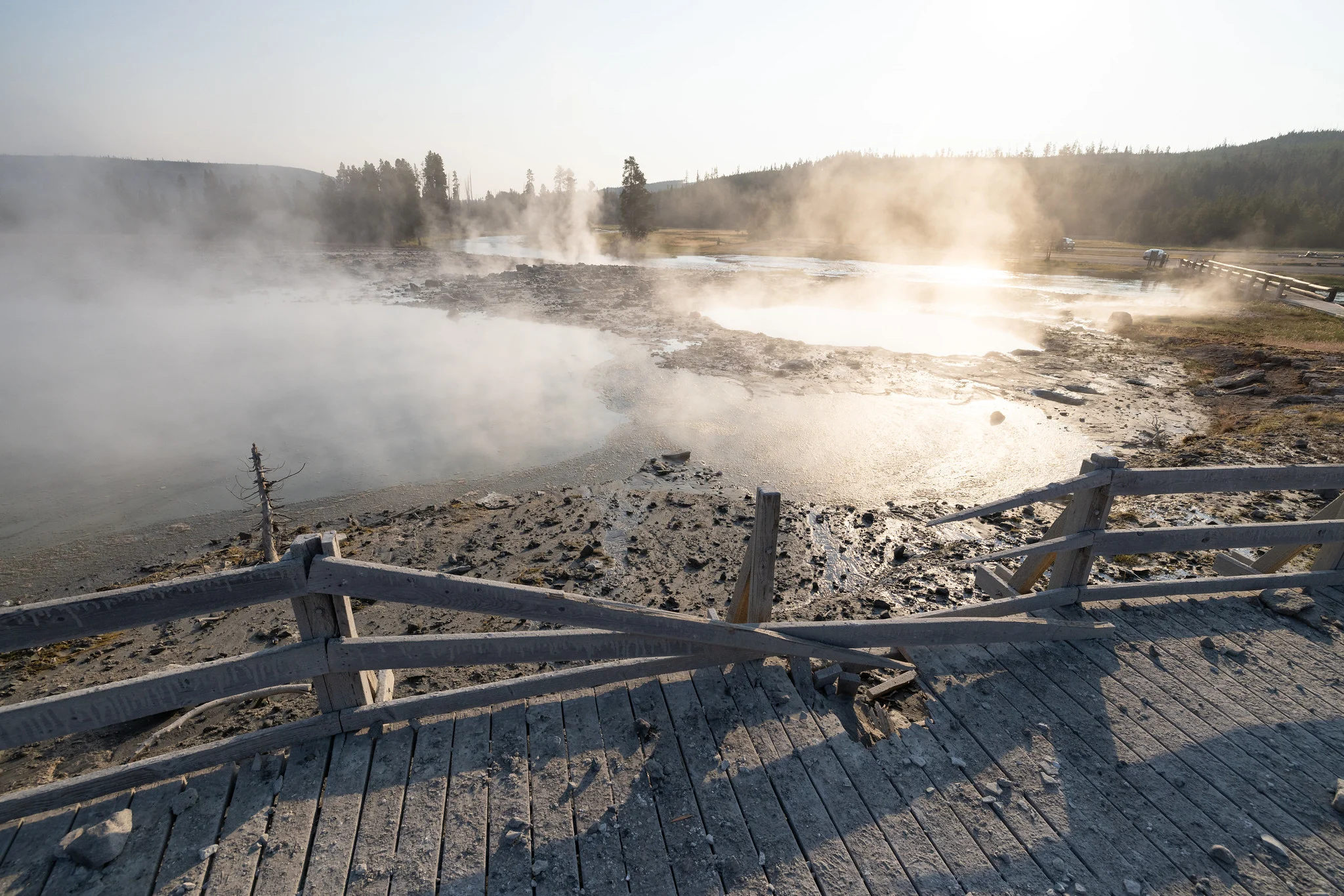
Tourists scramble as surprise explosion at Yellowstone hurls large rocks, steam
The basin has been closed for the remainder of the summer.
An unpredicted eruption startled visitors to Yellowstone National Park Tuesday when it sent steam, water, and giant rocks into the air, forcing people to run for cover.
The surprise hydrothermal explosion happened around 10 a.m. in Biscuit Basin, a collection of hot springs north of the "Old Faithful" geyser.
According to a statement on the National Park Service (NPS) website, officials have closed the basin for the remainder of the season due to the explosion.
"The July 23, 2024, hydrothermal explosion at Biscuit Basin resulted from water suddenly transitioning to steam in the shallow hydrothermal system beneath Black Diamond Pool and was not caused by volcanic activity," the statement continues.
"...The explosion, which sent steam and debris to a height of hundreds of feet above the ground, destroyed a nearby boardwalk and ejected grapefruit-sized rocks tens to hundreds of feet from the source. Some blocks closest to the explosion site are about 3 feet (1 metre) wide and weigh hundreds of pounds."
NPS explains that the unusually dark colour of the explosion was caused by a mixture of mud and debris mixed with boiling water.
Thankfully, nobody was injured.
"We saw more steam coming up and within seconds it became this huge thing," Steve March, a California real estate agent who filmed the event, told The Associated Press.
"It just exploded and became like a black cloud that covered the sun. I think our tour guide said, 'Run,' and I started running, and I started screaming at the kids, 'Run, run, run,' and I continued filming what I could."
The NPS says hydrothermal explosions typically occur a few times each year, but they are more common in more secluded parts of the park.
But hydrothermal explosions as large as Tuesdays are rare, with the last comparable event occurring in the 1880s at Excelsior Geyser in Midway Geyser Basin, the NPS says.
RELATED: A look at Yellowstone's Grand Prismatic Spring
Header image courtesy of NPS.











